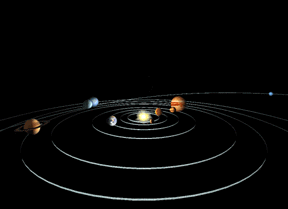The Earths formation is the start of the geologic time scale. Earth was believed to be formed about 4600 million years ago. (2) The formation of our oxygenic atmosphere happened about 2050 million years ago, giving rise to life that’s more complex. At about 1800 million years ago complex single celled life was formed, such as protists with nuclei. (2) About 251 million years ago dinosaurs roamed the planet and the super continent Pangaea existed. 451.5 million years ago flowering plants proliferate and new insect types appear. (2) The biggest extinction in Earth’s history occurred about 250 million years ago. 96% of the Earths marine species were wiped out and it took a while for our Earth to recover. (2) 65 million years ago a mass extinction called the K-T extinction occurred and many plants and animals went extinct. This marked the end of the Mesozoic Era and the beginning of the Cenozoic Era. The Pleistocene ice age happened from about 2.558-0.0117 million years ago. (2) This was a period of time where ice ages were frequent, about 4 occurred during this time.
Index fossils help scientists date rock. If certain life forms are found in the rock that only occurred during a certain time period scientists can date the rock to that time. The shorter the lifespan of a species the closer scientists can date the rock. (3)
1. "Solar System Formation- Gas & Dust to Solar Nebula to Sun with Planets." Windows to the Universe. Web. 20 Nov. 2011. <http://www.windows2universe.org/our_solar_system/formation.html>.
2. "Geologic Time Scale." Wikipedia, the Free Encyclopedia. Web. 20 Nov. 2011. <http://en.wikipedia.org/wiki/Geologic_time_scale>.
3. "Index Fossil." Wikipedia, the Free Encyclopedia. Web. 20 Nov. 2011. <http://en.wikipedia.org/wiki/Index_fossil>.



No comments:
Post a Comment